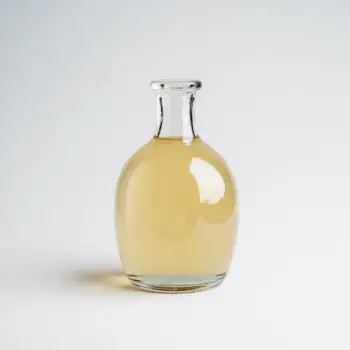
Substitutes for white vinegar in cooking include lemon juice, cream of tartar for baking, distilled malt vinegar and lemon juice for cleaning, apple cider vinegar and distilled malt vinegar for pickling, rice and balsamic vinegar for marinades, and apple cider vinegar, lemon juice, and rice vinegar for salad dressings and gluten-free recipes.
Lemon juice can be used in a 1:1 ratio as a leavening agent in baking when combined with baking soda. Expect a mild citrus flavor. Use fresh lemons or bottled lemon juice like ReaLemon.
Cream of tartar can provide the acidity needed in baking. Use 1/2 teaspoon of cream of tartar to replace 1 teaspoon of white vinegar. It's ideal for stabilizing egg whites in meringues. Brands like McCormick offer cream of tartar.
Distilled malt vinegar can be used as a non-toxic cleaning agent in a 1:1 ratio. It has similar cleaning properties to white vinegar. Keep in mind it may leave a slight scent. Sarson's is one of the brands that offer distilled malt vinegar.
Lemon juice can be used for cleaning in a 1:1 ratio. It has natural antibacterial properties and a fresh scent. It's particularly good for removing hard water stains and polishing metal surfaces. Fresh lemons or bottled lemon juice like ReaLemon can be used.
Apple cider vinegar can replace white vinegar in pickling with its similar acidity. Use in a 1:1 ratio for a slightly fruity undertone. It's particularly good with apples and cucumbers. Brands like Bragg are recommended.
Distilled malt vinegar offers a tangy, milder taste for pickling. Use it in a 1:1 ratio. Expect a different flavor profile suited to British-style pickles. Sarson's is a brand that is commonly used for pickling.
Rice vinegar is sweeter and less acidic than white vinegar and can be used in a 1:1 ratio for marinades. It is a staple in Asian cooking and works well with delicate flavors. Brands like Marukan and Kikkoman are popular.
Balsamic vinegar adds a rich, complex flavor to marinades. Use it sparingly, as it is stronger and sweeter. A 1:2 ratio with white vinegar is recommended. Expect a darker color in the marinade. Modena is a region known for high-quality balsamic vinegar.
Apple cider vinegar has a milder taste and can be used in a 1:1 ratio as a substitute for white vinegar in dressings. It may contribute a slight fruitiness to the dish. It's particularly popular in health-focused recipes. Brands like Bragg and Heinz are well-known.
Lemon juice can provide the necessary acidity in dressings. Use it in a 1:1 ratio but expect a citrus flavor. It's a natural fit for Mediterranean dishes. Fresh lemons or brands like ReaLemon are commonly used.
Apple cider vinegar is naturally gluten-free and can be used in a 1:1 ratio. It's suitable for gluten-free dressings and marinades. Bragg is a trusted gluten-free brand.
Rice vinegar is another gluten-free option that can be used in a 1:1 ratio. It works well in gluten-free Asian-inspired recipes. Ensure the brand you choose is certified gluten-free, like Marukan.

Your ultimate Recipe Box, Meal Planner, and Cooking Class all in one
| Recipe Category | Substitutes |
|---|---|
| Baking | Lemon Juice, Cream of Tartar |
| Cleaning | Distilled Malt Vinegar, Lemon Juice |
| Pickling | Apple Cider Vinegar, Distilled Malt Vinegar |
| Marinades | Rice Vinegar, Balsamic Vinegar |
| Salad Dressings | Apple Cider Vinegar, Lemon Juice |
| Gluten-Free Recipes | Apple Cider Vinegar, Rice Vinegar |
White vinegar is a versatile ingredient with numerous culinary and household uses. The substitutes provided can effectively replicate its role in various applications. It's important to consider the flavor profile and acidity level of these alternatives to ensure the desired outcome in your recipes.